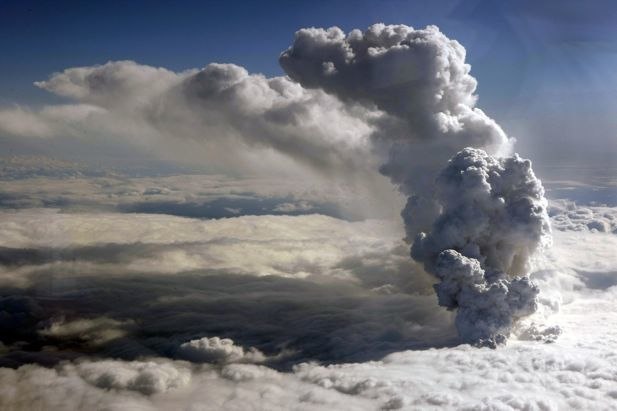A thunderous sound was heard in Juneau, Alaska
that demanded
attention
of
all
living
creatures
human, or not.
The sound had
traveled 750 miles
and about 1 hour to grab
their attentive ear. The residents
of Kodiak Island heard the same sound
earlier, but much more defined and powerful.
The source was Novarupta Dome and was the largest
and most powerful volcanic eruption of the 20th century:


Although most thought Katmai (above) to have
been the cause, it was over 40 years later that
an expedition would prove different. The eruption
immediately threw ash about 20 miles high and
drifted in a large spreading pattern that blanketed
a vast area of the North American continent.
Due to removal of that much material (magma)
from beneath, Katmai collapsed and sank
several hundred feet into itself.
 ^ This should give you an idea of the immensity
^ This should give you an idea of the immensityof this eruption compared to the others
in our local area and the fallout effects
recorded in the last 100 years.
I know that air traffic is of greatest concern to
media and our societies, but have you seen the
ash and debris thrown by Laki volcano in Iceland?
 ...makes me feel kinda little - you?...
...makes me feel kinda little - you?...A lot of worry is that the much larger Katla will
erupt as seems to be the pattern from records as
200 years ago had caused Móðuharðindin or,
"Mist Hardships". I am thinking that more attention
should be payed to surviving on the ground rather
than how we can hop continents in our planes.
I would not be one to tell you that this is the
end of times, but it could possibly be the onset
of a new age....
What do you suppose the carbon footprint of that is?
Maybe we should impose fines on Iceland.
2 opinionated prattle:
Really good information. It is truly amazing the energy that is stowed in a single volcano. Watching these earthquakes happening on a regular basis and now the volcanoes reacting, makes one ponder what is really going on beneath our feet. Just on a local scene, I think it was in February 1912 that our local volcano blew the top off the mountain and has been dormant since then. Very few people living in the area do not even realize or know that Olson Mountain is a inactive volcano. It was much taller in 1912 but the eruption blew away the majority of the mountain and flattened it out. It was not until the early 1950's that it was declassified as a volcano and the Air Force built the base on the mountain. Saved them a lot of dirt work. Fascinating stuff.
...AND, HITWRA was originally the effect of the land sinking in to fill the void left below..?..
I would have to see some information on that. probably classified?
Post a Comment
If you feel the incessant urge,
and your tongue is sharp and quick,
leave a worthless thought for me
whether cool, or fun, or sick.